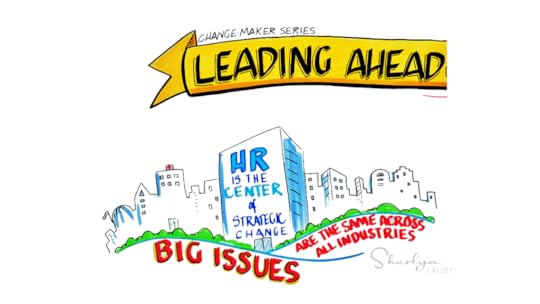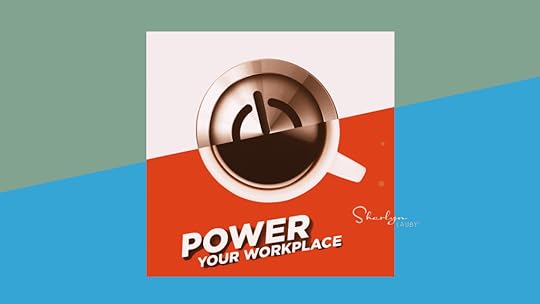Sharlyn J. Lauby's Blog, page 43
February 7, 2023
Employee Benefits: Eliminating the Family Glitch In the Affordable Care Act

Estimated reading time: 7 minutes
Just in case you missed it, late last year, the Biden Administration issued a final rule which closes what is called the “family glitch” under the Affordable Care Act (ACA). Basically, the family glitch was an Internal Revenue Service (IRS) rule that kept families from qualifying for ACA subsidies when one member of the family received employer health care coverage that was considered “affordable” – even if the cost for family coverage was unaffordable.
The family glitch had an impact primarily on lower-income workers because they were unable to receive the subsidies that would allow them to buy health care insurance through the ACA marketplace.
Employers need to be aware of this change and how it can impact employee benefits. To help us understand what closing the Affordable Care Act’s family glitch means for employee benefit plans, I asked Cory Jorbin, Esquire, from HUB International to share his insights. Cory is the chief compliance officer for HUB’s employee benefits west region. In his role, Cory provides day-to-day compliance support to clients of all sizes on the Employee Retirement Income Security Act (ERISA), the Affordable Care Act (ACA), the Health Insurance Portability and Accountability Act (HIPAA), the Family and Medical Leave Act (FMLA), and other related matters. Cory helped us a few months ago learn more about Individual Coverage Health Reimbursement Arrangements.
While Cory is a licensed attorney and is admitted to practice before the United States Tax Court, please remember his comments should not be construed as legal advice or as pertaining to any specific factual situations. If you have detailed employee benefits questions, they should be addressed directly with your benefits broker or friendly neighborhood labor and employment attorney.
Welcome back, Cory. Tell us briefly about the “family glitch” under the Affordable Care Act (ACA)?
[Jorbin] Under the ACA, if an employee was offered affordable, minimum value coverage, the employee’s spouse and dependent children were automatically ineligible for premium tax credits or subsidies to purchase discounted coverage on the exchange. This glitch resulted from the fact that the affordability and minimum value requirements were tied only to the employee only tier of coverage, not tiers of coverage applicable to the employee’s family members.
We know that the Biden Administration closed the “family glitch”. Does this impact any other aspects of the ACA?

[Jorbin] The closing of the family glitch greatly expands subsidy eligibility. As a result, exchanges have seen increases in enrollment, which may reduce adverse selection in the individual market and ultimately help stabilize individual market rates. At least some of the increased enrollment will be coming from spouses and children who were previously enrolled in group health plans. If these plans were self-insured and subject to the Patient Centered Outcomes Research Initiative (“PCORI”) fee, those employers will see their fees reduced. The PCORI fee is an annual fee based on plan enrollment that is aimed at helping patients, clinicians, purchasers, and policymakers make better-informed healthcare choices by advancing clinical effectiveness research.
Why should organizations care about the closing of the “family glitch”?
[Jorbin] Employers should use the closing of the family glitch as an opportunity to reevaluate their contributions towards family coverage. While the glitch was in place, employers may have seen employees enroll their spouses and children in the employer’s plan despite it being unaffordable.
Typically, employers also try to manage their premium increases across all tiers from one year to the next. The closing of the family glitch provides employers with a reset because employees will be able to show their employers (via the enrollment of their spouses and children in the health plan) whether the employer’s premiums are affordable. By reevaluating contributions, the employer can better understand whether their health plan premiums are meeting the needs of their employees and their families. For example, if the employer sees many spouses and children of lower earning employees leave their plan, this may be an indication the family premiums are beyond reach for many employees. In turn, this could prompt the employer to add a less expensive plan option for family coverage.
Some employers might view the closing of the ‘family glitch” as a good thing. Meaning that they will see a decrease in enrollments – because employees can take advantage of the subsidies. But is it really good for organizations? Why or why not?
[Jorbin] While the glitch was in place, employers may have seen employees enroll their spouses and children in the employer’s plan despite it being unaffordable. The removal of the glitch now allows the spouse and children to potentially leave the group plan and enroll on the exchange.
Some employers may be happy to see their overall enrollment decrease, however others may not, due to the potential for adverse selection. In other words, those who leave the group plan may be low utilizers of the plan, who are eager to pay less for coverage they hardly use anyway. Meanwhile, if family coverage is affordable for those who regularly utilize the plan, the plan will see lower enrollment overall, but a greater percentage of those who incur claims.
A lot of organizations hold employee benefits open enrollment in Q4, so plans and rates could be locked in for 2023. Is there anything that employers should be doing now at the start of a new year?
[Jorbin] Once the plan year has begun, changes to rates are possible, but not very common and potentially disruptive. Employers who sponsor calendar year plans however can begin planning for their 2024 plan years. A good starting point would be looking at family tier contributions and assessing whether an average employee can afford these rates.
ACA affordability is 9.13% for 2023. If your lowest cost, family tier of coverage is 12%, 15%, 18% or more of your average employee’s rate of pay, this might be an indication that spouses and children are eligible for subsidies. Employers can also consider doing benefits surveys to understand what employees think of the benefits and rates. This could be a great way to gather information about how employees view the benefits offered by the employer. Off-calendar year plans can do all this now, before their 2023 renewals.
Great point about examining employer contribution strategies. That leads us to our last question. Is there anything else that employers should be thinking about as they start planning for their next enrollment period?
[Jorbin] I suggest that employer’s think about the big picture and not just focus on potential decreases in enrollment. This means thinking about how your family premiums fit into your overall culture. For example, if you provide paid parental leave, or paid family leave (other than when required by law) but your family medical premiums are high, you’re sending an inconsistent message to employees. Likewise, consider how family premiums impact your talent acquisition strategies. High family premiums may lead to candidates declining job offers.
Finally, do understand that plan enrollment may be impacted, but that not all drops in enrollment are good. Spouses and dependents who move to exchange plans may actually be those who are considered good risk, and only incur limited claims. If this is the case, the overall risk profile of the plan changes, because now the plan has fewer enrollees, but more enrollees who incur claims. Over time this can lead to adverse selection, where poor plan performance is driven by a limited number of individuals.

A huge thanks to Cory for sharing this information with us. If you want to learn more, HUB has more in-depth information in their employee benefits compliance directory.
This is a perfect example of why compliance is an important and strategic part of human resources. What might seem on the surface like a little closing of a glitch can have a big impact on employees and the business.
Image captured by Sharlyn Lauby while exploring the National Atomic Testing Museum in Las Vegas, NV
The post Employee Benefits: Eliminating the Family Glitch In the Affordable Care Act appeared first on hr bartender.
February 5, 2023
Employees Are Unable to Identify Sexual Harassment

Estimated reading time: 2 minutes
I ran across an article recently in HR Brew titled “The majority of workers can’t correctly identify sexual harassment”. If you haven’t seen this article, I’d suggest checking it out. It cites a study from Cornell that showed seven scenarios to workers in industries with high rates of complaints. Only 6% were able to correctly identify the seven situations as sexual harassment.
If there’s good news to be gleaned from this article, it’s that study respondents who felt their HR departments have taken a stance against harassment did better on the study. This means that HR departments should:
Have support from the management team, and I mean the entire management team. There should be zero tolerance for harassment and zero tolerance for retaliation. Put a policy in place. Employees should learn about the policy during orientation, and they should be reminded of it regularly. Conduct training. You don’t have to create training. There are training programs already in place that can be delivered in-person and online.And honestly, these are just the basics. Organizations should have a comprehensive compliance strategy that includes more than just an anti-harassment policy. They should have a communications plan in place, so employees know what to do when they have questions and concerns. And they should give employees training so there is no question about what appropriate behaviors are and what to do if they see something that should be reported.
If your organization hasn’t done an HR audit lately, this might be a great time to do a review and make sure your compliance strategy is current. There are consultants that specialize in audits and can help with the process. Your employment attorney might know someone.
Being in compliance is important. The last thing that anyone wants is to find out that an employee is being sexually harassed and the reason they didn’t report it is because they didn’t know what harassment looks like. And your legal counsel can chat with you about the potential liability.
Organizations should already know this, but this study is a good reminder. Please make sure you have an anti-harassment policy and training in place.
Image captured by Sharlyn Lauby while exploring the streets of Fort Lauderdale, FL
The post Employees Are Unable to Identify Sexual Harassment appeared first on hr bartender.
February 2, 2023
Encourage Employees to Manage Their Career

Estimated reading time: 3 minutes
I’m a fan of the television show “Ted Lasso”. One of my favorite quotes from the show is during the season two finale when Higgins tells Keeley, “A good mentor hopes you will move on, a great mentor knows you will.”
Some people might read the title to today’s article and say, “No! If employees get good at career management, they will leave.” Guess what, that’s okay. Because employees will definitely leave if they don’t feel the organization is supportive of their career. In a survey conducted by Pew Research, 63% of employees said they quit a job during 2021 because of lack of advancement opportunities.
So instead of holding employees back, encourage them to grow, learn, and manage their career. Here are a few articles that might be helpful.
Employees Should Develop More Emotional Intelligence
Employers are regularly looking for employees who can go the extra mile, stay calm in frustrating encounters with customers and/or coworkers, and will learn new things to be better at their job. It only makes sense for companies to support efforts for employees to learn more and develop their emotional intelligence. It makes for better working relationships and organizational results.
4 Qualities of High Performance in Employees
I don’t know that it’s a guarantee that success can be learned. I do know that we can develop the qualities of high performance. Then it becomes how we apply those qualities. We need to regularly check-in with ourselves to ensure that we’re on the right path and performing optimally.
How Do You Optimize Your LinkedIn Profile
According to their website, LinkedIn has nearly 800 million members in more than 200 countries and territories worldwide. Their focus is to connect business professionals. Regardless if you’re looking for a new opportunity, you should have a profile on LinkedIn. And you should constantly be optimizing it.
What Is Internal Mobility and Why Is It Important
The movement of employees within the organization is called internal mobility. The typical types of activities that we think of when it comes to internal mobility are promotions, laterals, demotions, and transfers. Regardless of what is happening with today’s recruiting market, making sure that current employees have career opportunities is an important part of the employee experience.
Job Rejection Emails: Are They Necessary
Organizations definitely need to send rejection emails or have close-the-loop conversations. On the employee side, I’m torn about sending a reply to a rejection email. Individuals should ask themselves, “What’s the goal?”. If you’re trying to keep the door open with an organization, then yes, a response could be appropriate. In the case of an internal candidate, it could make some sense to follow up and let the organization know that you take their feedback seriously.
While I started today’s article saying that organizations need to encourage employees to manage their career, let me end with saying that employees need to take an active role in their careers as well. Learn how to evaluate your own performance and identify things you want to learn. Set goals for yourself and monitor your progress.
Together organizations and individuals can work to ensure that employees are successful in their careers. This benefits everyone.
Oh, and P.S. whether you’re an individual or an organization, you might be saying to yourself, “Hey this is all great, but budgets are tight! We don’t have the resources!” Please don’t forget about your public library. Many locations offer FREE access to educational opportunities like LinkedIn Learning.
Image captured by Sharlyn Lauby while exploring the streets of London, England
The post Encourage Employees to Manage Their Career appeared first on hr bartender.
January 31, 2023
Use CARL as a Behavioral Interview Alternative to the STAR Method

Estimated reading time: 3 minutes
I realize that some organizations are discussing hiring slowdowns and even layoffs. But there are still plenty of organizations that are hiring. In fact, many organizations are using this time to upskill and reskill employees into new roles that will help the company achieve its strategic goals. And that’s smart.
At some point, companies will realize that the key to their economic growth is not necessarily cutting back staff. It’s making sure that they have the right people in the right roles and that they’ve been set up for success with training and tools.
It’s also why organizations need to focus some energy on creating a good candidate experience and hiring process. Whether the organization is focused on internal mobility or external hiring, it’s important to ask good interview questions. Because a candidate’s responses are what is being used to extend the offer.
I recently published an article about how acronyms can be a helpful learning tool. One of the common acronyms used for interview questions is the STAR method. STAR stands for situation, task, action, result. It’s great for designing a behavioral based interview question. And just as a quick reminder, behavioral interview questions are considered an effective technique because past behavior is usually a good predictor of future performance.
What was the SITUATION?Describe the TASK you were responsible for.Outline the ACTION steps you took.Share the final RESULT.I like STAR because it’s not only helpful for designing interview questions but also follow-up questions. For example, let’s say we ask a candidate to “Tell me about a time when you had to calm an angry customer.” The candidate might explain the situation, the task, and the action they took but forget to share the result. This allows the interviewer to ask about the result.
As much as I like STAR, I learned about another acronym that could be equally useful. CARL stands for circumstances, action, results, and learned.
What were the CIRCUMSTANCES of the situation?What ACTION did you take?Share the final RESULT.What did you LEARN from the situation?It appears that CARL combines task and action, then adds a learn component. This could be very useful when asking questions like “Tell me about a time when you had to work with someone you did not personally like.” Not only do you hear how the candidate handled the situation but what they learned from the experience.
Regardless of what’s happening in the labor market, organizations will need to find and hire the best employees. That means asking good interview questions. You can use STAR and CARL to design interview questions that will allow the candidate to showcase their experiences. In the end, that will allow the organization to hire qualified people.
Image capture by Sharlyn Lauby while exploring the Workhuman Conference in Nashville, TN
The post Use CARL as a Behavioral Interview Alternative to the STAR Method appeared first on hr bartender.
January 29, 2023
Conflict Management at Work

Estimated reading time: 4 minutes
A couple of months ago, I published an interview with Alex Alonso about his latest book “Talking Taboo: Making the Most of Polarizing Discussions at Work”. I hope you’ll check it out. One of the reasons I wanted to interview Alex is because political conversations are much more prevalent at work.
It reminds me of an event I attended a few years ago (pre-pandemic). At this conference, several CEOs of Fortune 100 companies were talking about the workplace. One of the recurring themes was that topics like politics, civil rights, human rights, etc. were topics they could no longer ignore. I remember one CEO saying that he thought the company could stay apolitical and not get into these discussions. Then George Floyd was murdered. And employees asked why the company wasn’t taking a stand.
An increasing number of employees are looking for their organizations to speak up when inequities and injustices happen. But I don’t have to tell you that what I might feel is wrong or unjust, someone else might feel is just fine. Or they might not be as passionate about it as I am.
The Society for Human Resource Management (SHRM) released a study showing that 20% of workers felt they have experienced mistreatment because of their political views. Employees elaborated that they felt their career opportunities were limited based on their political views. And job seekers felt companies might have been eliminated from consideration because of their political views. One of the things I found interesting in this study was that individuals with both conservative and liberal views felt the same. Meaning this type of “political affiliation bias” isn’t exclusive to one political point of view.
Which is a very long introduction to today’s topic – conflict management. Harvard Business Review published an article on “How to Navigate Conflict with a Coworker” that’s worth a read. If we’re going to continue having political and societal conversations, then we need conflict management skills. I loved the last point in the HBR article about staying curious to reduce bias and defensiveness in conflict situations. Some other actions that organizations might want to consider include:
During the interview process, ask candidates how they deal with conflict. Especially conflict with coworkers. One of my favorite interview questions is “Tell me about a time when you had to work with someone you did not personally like.” Honestly, even if you’re organization isn’t having any kind of politically charged discourse, conflict happens, and candidates should expect to discuss it. Companies might want to have some form of conflict management training available for employees. Maybe an introductory session with a model like the Me + We + WO + RK framework outlined in the “Talking Taboo” book, then refreshers in the form of a webinar or podcast. This could be helpful for employees both in terms of working through conflict with a coworker as well as when they have conflict with a customer.Conflict has always been a part of work. It’s just that, in today’s workplace, sometimes the subject of the conflict is different. I’m not sure that’s going away anytime soon. Instead of trying to ban these conversations – because honestly, that’s not going to work – equip employees with the tools to resolve them on their own. And then hold them accountable for doing so. This doesn’t mean that management might not have to occasionally step in, but employees should not be allowed to create chaos and leave it for a manager to clean up. Oh, and this also means that managers need the training to deal with these messy conflict management situations when they occur.
Many organizations are asking employees to spend more time onsite, so this is a perfect time to look at learning opportunities. If you have a conflict management program, remind employees that it exists. And if you don’t, think about implementing one. It’s a long-term solution to an issue that just might be here to stay.
Image captured by Sharlyn Lauby while at the Wynwood Art District in Miami, FL
The post Conflict Management at Work appeared first on hr bartender.
January 26, 2023
Why Employees Might Consider Joining Unions

Estimated reading time: 4 minutes
There’s a great article over on Jon Hyman’s Ohio Employer Law Blog titled “Why employees are quitting might also tell you why they are unionizing”. It’s a great read so be sure to check it out.
It also reminded me that when we think about the reasons an employee leaves the organization, whether it’s management, compensation, work/life balance, etc., that it’s the uncertainty of those things that often causes employees to leave or join a union.
“I’m uncertain about the way my manager will treat me or evaluate my performance.”“I’m uncertain about my pay and benefits. The company is making lots of changes.”“I’m uncertain about my schedule both in terms of when I work and how much I work.”No one is saying don’t hold employees accountable. Or that organizations can’t change benefits. Or that employees aren’t open to scheduling changes. But when organizations do all these things at the same time or without good communication…well, employees don’t know how to have a life. They also don’t know how to do their best work.
So, employees might try to find another company that will offer that stability. Or they will look for a third-party representative (aka a union) to provide that stability where they are. A collective bargaining agreement (CBA) can define things like scheduling, pay, grievances, and more.
If the organization is concerned about a union organizing attempt, they should consider consulting with a labor relations expert and a lawyer. There are laws regarding union organizing and unfair labor practices. If you don’t deal with labor relations matters on a regular basis, you might be surprised at what you can and cannot do.
But let’s put the union conversation to the side for just a moment. If the organization doesn’t want employees to consider leaving or forming a union, there are a few things they should look at.
Compensation and Benefits. Let’s start with the obvious. Employees want to know that they’re being paid internally equitable and externally competitive. Organizations should regularly benchmark their compensation and benefits against their industry and their location. This doesn’t mean you have to adjust pay but do know where you stand so you can make educated decisions.
Management Training. There’s an old saying that employees don’t leave companies, they leave bad managers. One of the worst things that companies do is promote the most technically competent person to management and not give them the training they need to manage people. I understand offering training over the past couple of years has been tough with the pandemic. Now’s the time to bring back management development.
Employee Feedback. Organizations can learn a lot by asking employees for feedback. They can learn what employees are thinking about their jobs. Don’t forget you can also learn ways to make the operation more efficient. But many times, it means asking the question. You can do this via surveys, check-ins, one-on-one meetings, etc. The key is listening and being transparent when it comes to what the organization can do.
Change Management. Finally, organizations need to think about how they implement change. Is it a very “top down” approach or more collaborative? Some decisions might require more of an edict where others could benefit from buy-in at every level. Companies need to consciously plan changes – the decision-making process, communications, and follow-up.
Stability is a big issue for employees. In a recent survey from Handshake, 74% of young professionals said job stability is a factor when looking at companies, far ahead of things like “fun”, employment brand, and having friends at work. Organizations can’t view activities like communication, training, and feedback as niceties that they don’t need to do in a volatile economy. In fact, it’s quite the opposite. If you want people – both employees and customers – to stick with you during uncertain times, then you need to offer some consistency in the way you do business.
Image captured by Sharlyn Lauby while exploring the streets of Washington, DC
The post Why Employees Might Consider Joining Unions appeared first on hr bartender.
January 24, 2023
Don’t Neglect Your Employee Breakroom

Estimated reading time: 5 minutes
(Editor’s Note: Today’s article is brought to you by our friends at Boxed , an e-commerce retailer. Boxed provides bulk pantry essentials to businesses and households. Check out this interview with Boxed CEO Chieh Huang on CNBC about grocery prices and the value of buying in bulk . Enjoy the read!)
I want to talk about a subject today that we don’t discuss very often – the employee breakroom. Your organization might also call it the office kitchen, employee cafeteria, or a lounge. Regardless of what you name it, I think it’s fair to say that organizations don’t promote their breakroom as a benefit AND employees don’t typically say that the employee breakroom is a reason they stay with the company.
But that doesn’t mean the breakroom isn’t important. And breakroom maintenance can really be quick and easy. The good news is that our friends at Boxed have a solution to help maintain your employee breakroom, but before we get into that, let’s talk about why breakrooms are important.
Employee breakrooms provide a place for three activities: relaxing, recharging, and reconnecting. They are three different things.
RELAX: Breakrooms are a place for employees to step away from their work. Let’s say you’re working on an intense analytical project or report. A few moments away from the computer screen would provide some clarity. Case in point, I was recently facilitating a people analytics seminar where I had to remind participants to step away from the case study we were working on because it will help them with their thought processes. Just a few moments can make a huge difference!
RECHARGE: Another situation where an employee lounge can be helpful is right after an employee has just ended a frustrating phone call and needs a minute of quiet. We’ve all been there. With the continuing conversation about employee wellness and wellbeing, giving employees a place where they can refresh is necessary.
RECONNECT: Because breakrooms are casual places, they can also be a space for employees to connect. One of the things we’ve been hearing a lot lately is that while remote work is great for many things, it might not be a replacement for good old-fashioned in-person conversation. (No offense to video conferencing.) I know we often don’t think of them that way, but I’m reminded of the times – as a HR professional – when an employee might come and start a conversation with me in the breakroom. It allowed me to invite them to stop by my office.
However, if the employee breakroom isn’t properly maintained, not only will employees be unable to relax, recharge, or reconnect, but it can become a source of employee dissatisfaction.
Breakrooms Need to Be MaintainedWhile organizations might not promote the office kitchen in their recruitment marketing efforts, if they aren’t well maintained, they become a source for complaints. True story: years ago, Mr. Bartender worked at a company where every afternoon they provided fresh popcorn to employees. The company had an employee who made sure the breakroom was always clean and tidy. And that employee would make popcorn every day. It was a wonderful perk. Mr. B would half-jokingly remark that employees were upset when there wasn’t any popcorn in the breakroom. I understand that’s a simplistic example, but you see my point.
It’s amazing to see all the breakroom comments when scanning the Antiwork sub on Reddit. Clearly this is something that matters to employees. And thankfully, maintaining an employee lounge doesn’t have to be complex. Here are three ways to treat it with respect.
Decide what you want to use it for. Many organizations use the breakroom to post notices, including compliance posters, which means we want employees to go there so they see this information. In addition to its usual lunchroom purpose, the breakroom can also be a place to have casual meetings.Keep it clean. No one wants to spend time in a dirty breakroom. Provide employees with basic eating utensils, paper plates, and napkins so the breakroom isn’t filled with dirty dishes, etc. Organizations can provide the cleaning supplies like soap and sponges so employees can clean up after themselves.Stock it appropriately. Please note: I’m not saying stock it lavishly. Employees like when the breakroom has snacks, and they don’t have to be outrageous. Organizations can provide drinking water, fruit juices, energy drinks, and coffee/tea. Snacks like Pepperidge Farm Goldfish, Chex Mix, Cheez-Its, and Famous Amos Cookies are classics.The good news is that the supplies I’m talking about – cleaning supplies, utensils, beverages, and snacks can be sent directly to the organization via our friends at Boxed. Simply create a free business account. Order the supplies you want and need. Have them shipped to you. Done.
With a Boxed business account, the organization can allow multiple people to order, and each order would be individually shipped. So, if the facilities department is responsible for the cleaning supplies and HR for the snacks, each department can order what they need and have it shipped directly to them. In addition, there’s also an office ordering feature so a department head could invite people around the office to place items in the “cart” before the order is approved and shipped. And the invoice can show each department’s expense for budgeting purposes. The accounting department will appreciate the itemized billing.
Turn the Employee Breakroom into Useful SpaceIt might be very tempting to think that employee breakrooms are a place for people to hide from their work. The opposite is actually true. It’s a place for employees to relax, recharge and reconnect for work.

Make the employee breakroom a clean space where an employee can grab a drink and a snack. They can take a few moments to refresh and recharge. The goal should be to do it well by keeping it simple. That’s what I like about the service and the products being offered by Boxed. They’re helping to keep employee breakroom maintenance simple and still maintain quality.
The employee breakroom can easily become a value add without a lot of effort. It only makes sense to give it the attention it deserves. Check out the Boxed for Business site, create an account (it’s free!), and start shopping today.
The post Don’t Neglect Your Employee Breakroom appeared first on hr bartender.
January 22, 2023
The Pros and Cons of Using Ghost Jobs in Your Recruiting Strategy

Estimated reading time: 3 minutes
Ghost jobs are advertised openings that either don’t really exist or never seem to get filled. There are a few examples of why organizations might create these job openings.
The company is considering an organizational change. Before they finalize the new structure, they run a “ghost job” to see if anyone applies. That helps the organization decide if they can fill this new role. An organization believes one of their employees is planning to leave. They cannot afford to be without this role, so they run a “ghost job” so they have some applicants just in case. A company has a position that is high turnover and open on a regular basis. So, the company regularly runs advertising for the job, whether they have an open requisition.There was an article recently in HR Brew about ghost jobs titled “Ghost jobs are the result of outdated recruiting processes, and you don’t need to rely on them to beef up your candidate pool.” While the article does contain several bad ghost puns (sorry!), it does have some good information about a ghost strategy and the advantages and disadvantages of using it.
As we discussed above, the big advantage to ghost jobs is the ability to potentially build a talent pool or pipeline. However, I must say that with today’s technologies and recruitment marketing strategies, it could be far more effective to build a talent pool or pipeline using other means than ghost jobs. Organizations can build an employment brand on social media, drive interested individuals to their career site, and encourage them to opt-in to receive job updates.
This approach would allow the organization to promote them as an employer and all the jobs they have available – not just the one job they are promoting via the ghost job strategy.
And then on the flip side, organizations have to think about how applicants might react if they figure out that they’ve applied to a ghost job. Will this impact the trust they have for the company? This has the potential to be a huge downside to ghost jobs. Individuals who believe they applied to a non-existent job might decide not to apply in the future when the organization has a real opening.
Organizations need to examine the rewards and risks to determine whether a ghost job strategy really works for them. If you’re not doing some sort of sourcing analysis, this would be time to consider one. Ghost strategy aside, organizations want to know that the budget they’re spending on sourcing is bringing qualified candidates. So, it only makes sense to examine the results from ghost job sourcing. Is the quality and quantity there? Does it help reduce time to fill and cost per hire?
I understand why companies might want to consider ghost jobs. The question becomes are they effective? And they might have been at one point in time. Then, the question is are they still effective today? And do the rewards outweigh the potential downsides? That I’m not so sure about.
Image captured by Sharlyn Lauby while exploring the spooky streets of New Orleans, LA
The post The Pros and Cons of Using Ghost Jobs in Your Recruiting Strategy appeared first on hr bartender.
January 19, 2023
Organizations Need to Have HR Compliance Stategies

Estimated reading time: 3 minutes
Over the years, there have been conversations about HR compliance being bad, wrong, or that part of the job that holds us back as a profession. Don’t misunderstand me. I’m not saying that following the law is bad or wrong. But sometimes people equate compliance with being very basic. And they figure if we spend most of our time doing basic things, then we don’t get to work on strategy (i.e., that ‘seat at the table’ stuff).
The reality is that compliance is strategic. The laws that organizations must follow are complex. And there are a lot of them. HR departments should develop compliance strategies so they can follow the law and guide the organization.
When companies have a compliance strategy, HR can do exactly what we were talking about at the beginning of this article – work with the organization on other strategies like recruiting, employee development, and total rewards. Here are a few articles to get the compliance strategy conversation going.
HR Compliance: Get Back to Basics During the Great Reset
When everyone is resetting expectations, now is the time for HR to get back to basics and reset how they’re going to do compliance. Case management software can help HR departments spend their time on activities that have a stronger alignment to the business and the bottom-line.
State Laws Can Impact Your Hybrid and Remote Work Strategies
The legal world is constantly changing. An increasing number of states are enacting legislation that impacts employment law. With employees being able to work from anywhere, this means organizations must understand the laws of the places where their employees are working.
Labor Law Posting Requirements for Hybrid and Remote Work
Today’s technology makes it easy to provide remote workers with their mandated postings. They also guarantee their work against government posting fines. When employees – regardless of where they work – know that organizations are transparent about their rights, it creates trust and engagement.
Strategic Compliance: Wage Garnishment Risk Avoidance
Right now, organizations are looking for HR and payroll to focus on employee recruitment, engagement, and retention. Employers must think about how they’re going to maintain compliance, including processing wage garnishments. But HR and payroll departments do not want to spend their time memorizing wage garnishment legislation in every state.
4 Compliance Strategies that Create Labor Efficiencies
Sadly, many HR processes are still manual and labor-intensive, burdening staff with tedious, inefficient tasks that can potentially introduce avoidable errors and compliance risk into the process. Creating a compliance strategy can lower costs, reduce unnecessary overhead, diminish risk, and position companies for both compliance and growth. As a result, the organization can concentrate on more strategic work – which may go beyond cost savings to positively impact employee hiring, engagement, and retention.
Making the Case for Strategic Compliance Change
When HR teams can look beyond day-to-day operational activities and compliance responsibilities, they can focus on identifying and capitalizing on opportunities to contribute to executive-level strategic business goals and to having a greater impact on employee recruitment, engagement, and retention. That’s where the organization wants them to be.
At the start of this article, I mentioned how having a compliance strategy is good for HR teams. Don’t forget that compliance strategies are good for recruitment, engagement, and retention. Employees can see that the organization makes compliance a priority. This helps with building trust and creating a safe work environment.
Image captured by Sharlyn Lauby at the SHRM Annual Conference in New Orleans, LA
The post Organizations Need to Have HR Compliance Stategies appeared first on hr bartender.
January 17, 2023
Employee Benefits Are an Important Part of Compensation

Estimated reading time: 3 minutes
I believe one of the things that organizations are focused on right now is rising employee salaries. Don’t get me wrong, I’m not saying that employers don’t want to pay employees equitably or competitively. But I think organizations are trying to find ways to look at the compensation conversation more holistically.
That’s where employee benefits come in as a component of total compensation. An employee benefit can provide a service at no cost or low cost to the employee, which keeps them from having to purchase something with their salary.
However, like a lot of things, employee benefits need to stay relevant. A benefit that an employee valued 5 years ago might not have the same value today. Here are some benefits-related articles that might offer insights toward benefits employees want.
8 Employee Benefits Worth Considering to Attract and Retain Talent
As the business world changes, employee benefits are going to change along with it. Ultimately, the company’s benefit package should align with the culture. What do your benefits say about you as an organization? Are they in sync with modern times?
Employee Benefits: Cafeteria Plans Offer the Options Employees Want
It’s not a surprise that employees want choices in their benefits. And this doesn’t mean that companies need to necessarily pay more. Cafeteria plans allow organizations to give employees the options they want so they can get the benefits they need.
Earned Wage Access: An Important Factor in Financial Wellbeing
Even with economic uncertainty, it’s important to remember there’s still a very competitive jobs market. Organizations should be looking for ways to stand out with candidates and retain employees. I think it’s time to realize that employees want greater control over their money. They deserve it. And it’s good for them…and the company.
Employee Birthday Celebrations Should Focus on the Recipient
I wish there was an easy answer to celebrating birthdays. But throughout this survey, I found myself thinking about one thing – a person’s birthday is about them and what they want. So maybe the answer is to just ask the person how they would like to celebrate.
Organizations need to regularly monitor benefits utilization to see what employees are using. In addition, they should talk with employees about their views on benefits. There are benefits that employees place tremendous value but might not use regularly – like health insurance. Employees want to know they have it available when they need it.
Employee benefits are a huge piece of total compensation. Don’t forget to communicate their value to employees.
Image captured by Sharlyn Lauby while exploring Boston, MA
The post Employee Benefits Are an Important Part of Compensation appeared first on hr bartender.
Sharlyn J. Lauby's Blog
- Sharlyn J. Lauby's profile
- 10 followers



